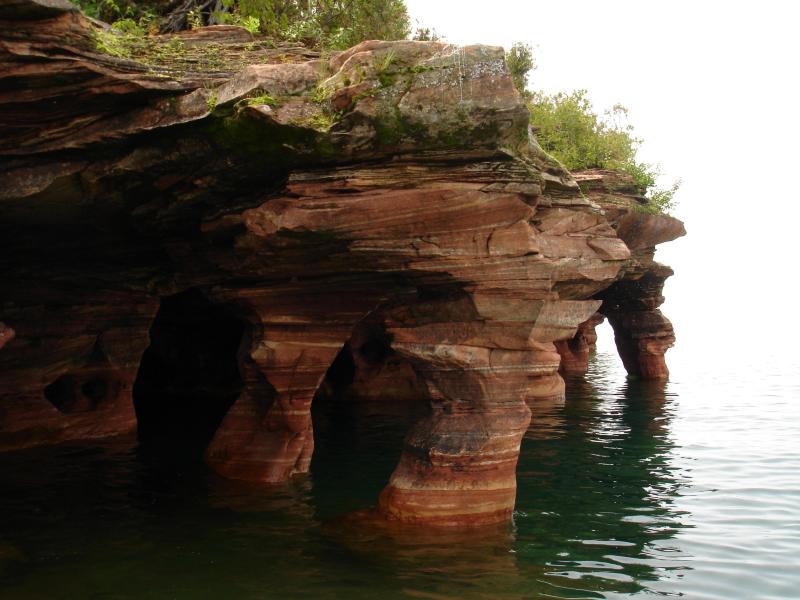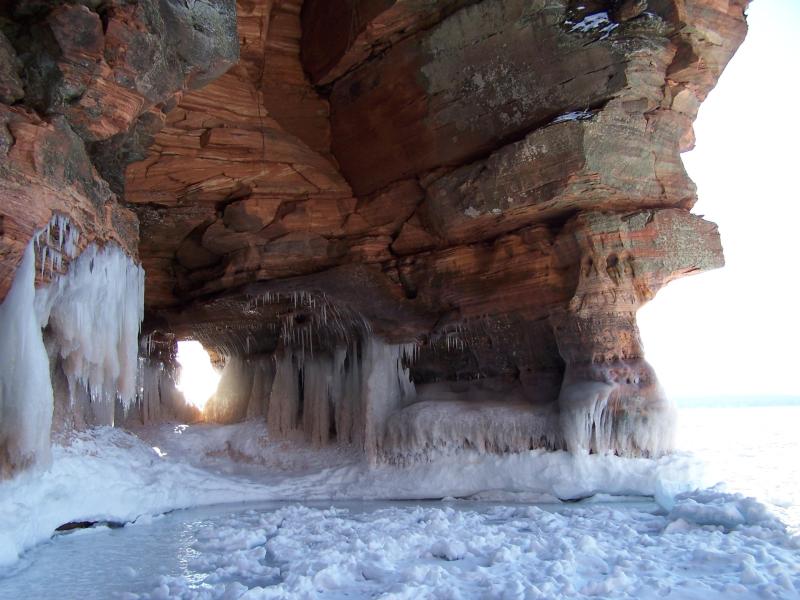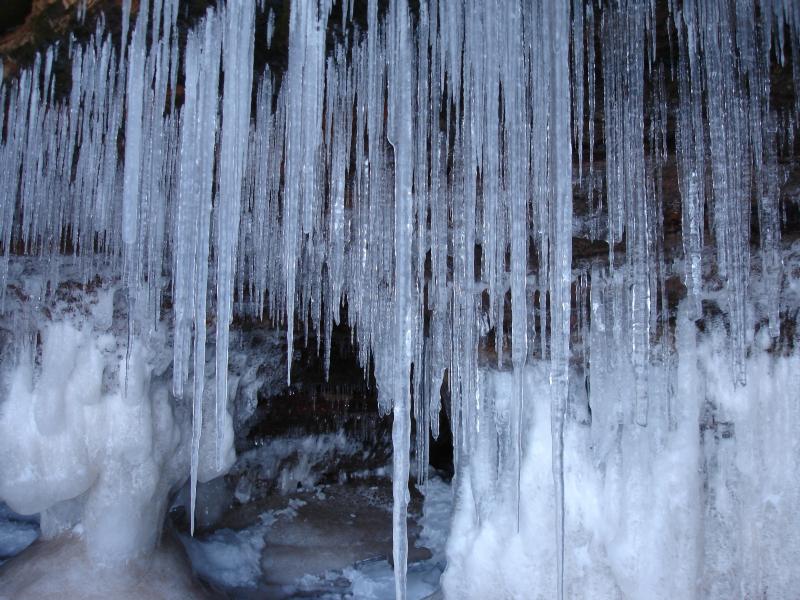If conditions hold, a series of breathaking ice caves off the coastline of Lake Superior could open for visitors this weekend. The wintry wonderland, part of Apostle Islands National Lakeshore, can be tricky to visit. Visitors must trek across the frozen surface of Lake Superior, and the ice has to be thick and stable before visitors are allowed to come. [Read the full story on the stunning ice caves.]
Remote islands
Apostle Islands National Lakeshore in Northern Wisconsin includes a chain of 22 islands in Lake Superior. During the summer, sea kayakers can explore the vaulted chambers and honeycombed tunnels of myriad sea caves around the islands. But in the winter, these surface of Lake Superior freezes and these ice caves become inaccessible.
Shoreline wonders
However, there are a few ice caves off the shoreline that visitors can still occasionally visit. These caves require trekking across the frozen surface of Lake Superior. Some of the sites include stunning frozen waterfalls, ice spires that are several stories tall and ceilings studded with shimmering iciles.
Icy crack
Here, visitors walk across the snowy surface of the lake through a crack in the cliffsides. The ice needs to be at least 10 inches (25.4 cm) thick and in place for at least two weeks before the National Park Service will allow visitors to make the hike.
Get the world’s most fascinating discoveries delivered straight to your inbox.
Visitors increasing
Last year, a stunning photo released by the Department of the Interior spurred thousands to visit the site. Some visitors parked miles down the road in order to get to the start of the hike. They then had to traverse a few miles of frozen beach and lake surface before viewing the breathtaking spectacle.
Precarious conditions
Right now, a strong wind is scouring the surface of Lake Superior, which could break up the ice. If the iceshelf blows away near the sea caves, visitors may not get a chance to visit this year.
Follow Tia Ghose on Twitter and Google+. Follow LiveScience @livescience, Facebook & Google+. Originally published on Live Science.

Tia is the editor-in-chief (premium) and was formerly managing editor and senior writer for Live Science. Her work has appeared in Scientific American, Wired.com, Science News and other outlets. She holds a master's degree in bioengineering from the University of Washington, a graduate certificate in science writing from UC Santa Cruz and a bachelor's degree in mechanical engineering from the University of Texas at Austin. Tia was part of a team at the Milwaukee Journal Sentinel that published the Empty Cradles series on preterm births, which won multiple awards, including the 2012 Casey Medal for Meritorious Journalism.







